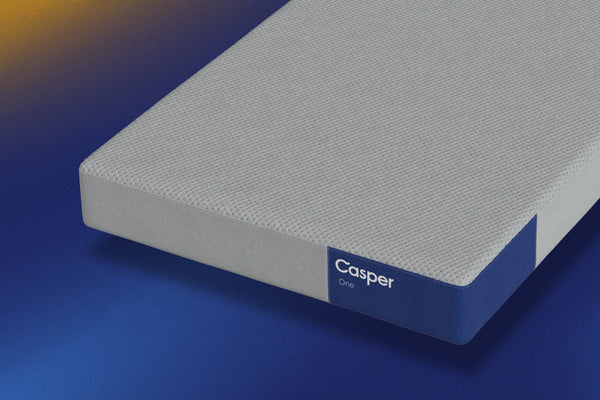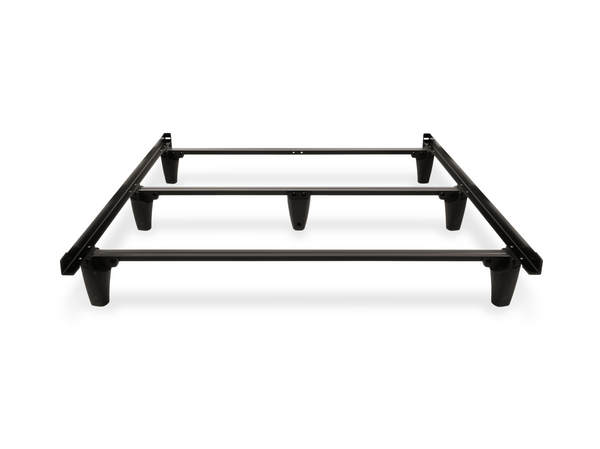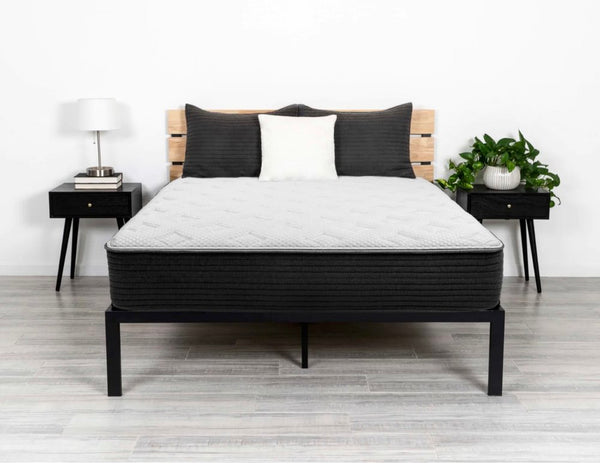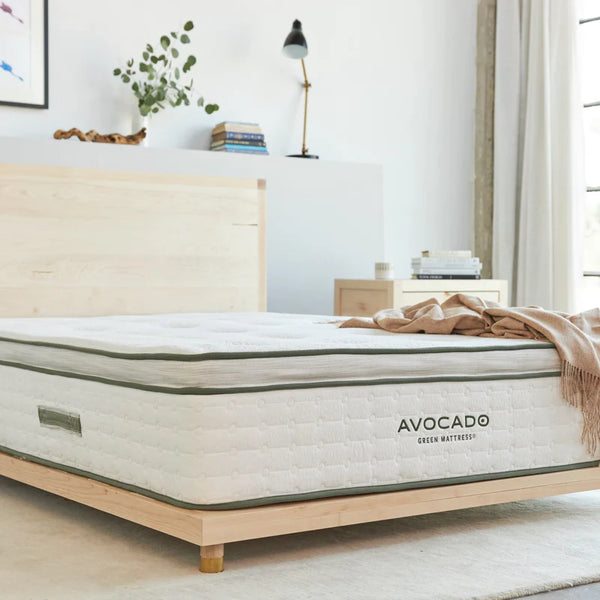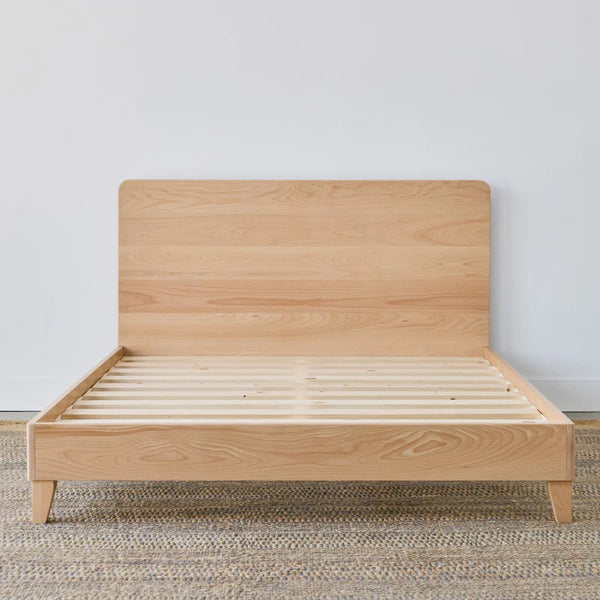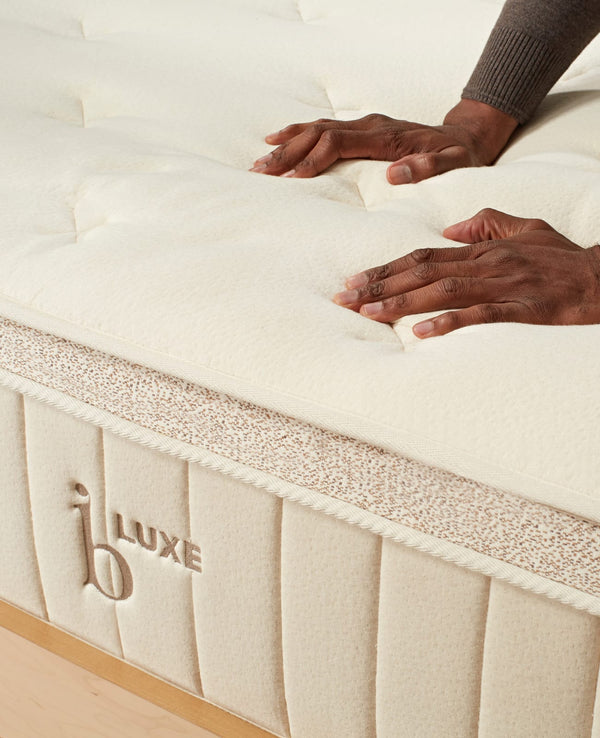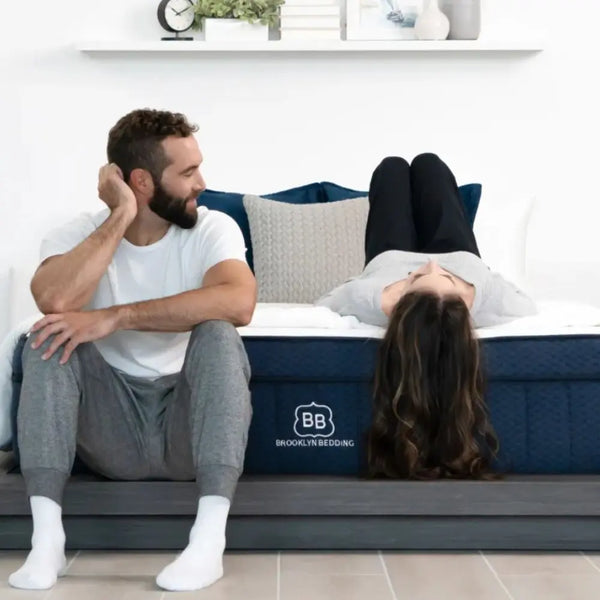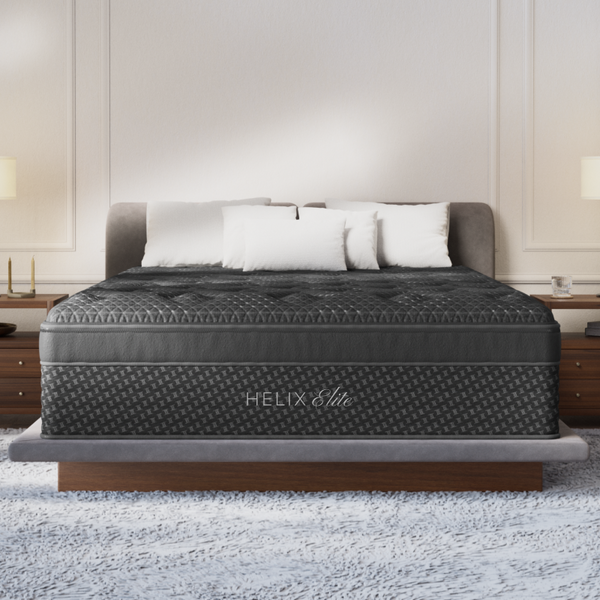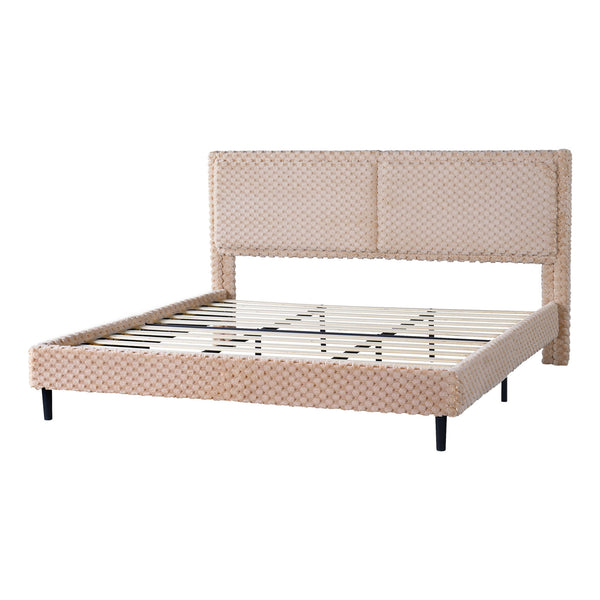Choosing between a hybrid mattress and memory foam can feel overwhelming when you're looking at dozens of options. At The Sleep Loft, we've helped hundreds of customers work through this exact decision at our showroom, and the answer isn't always simple.
Both mattress types have fans and clear benefits. The key is understanding how each one actually works and which features matter most for your specific sleep needs.
Key Takeaway
- Hybrid mattresses sleep cooler with average cooling scores of 8.8 vs 8.2 for memory foam, making them great for hot sleepers
- Memory foam excels at motion isolation with motion transfer scores of 4.04 m/s² compared to hybrid's 7.40 m/s², perfect for couples
- Hybrids offer better edge support and bounce with scores of 8.7 vs 7.8, giving you more usable sleep surface
- Memory foam typically costs less at first at around $1,150 compared to $1,300 for hybrids
- Hybrid mattresses last longer with average lifespans of 6.5-7.5 years versus 6-7 years for memory foam
- Your body weight matters more than sleep position when choosing between these technologies
- Both types work for all sleep positions when you pick the right firmness level
Understanding the Core Construction Differences
The main difference between hybrid and memory foam mattresses comes down to what's inside them.
Memory foam mattresses use layers of foam stacked on top of each other. You'll typically find 2-4 inches of memory foam on top for comfort, then a transition layer, and finally a high-density polyfoam base that provides support.
Hybrid mattresses take a different approach. They combine a coil support system with foam comfort layers on top. The coil core usually measures 6-8 inches and contains individually wrapped springs that move independently. Above that, you'll find 3-6 inches of foam layers that might include memory foam, latex, or polyfoam.
This difference creates distinct feels and performance characteristics.
The coil system in hybrids creates natural airflow channels throughout the mattress. Air moves between the springs, helping heat escape more easily than in solid foam.
Memory foam relies entirely on the foam materials themselves. Modern memory foam includes improvements like gel infusions and open-cell structures designed to help with breathability, but these work differently than the passive airflow in coil systems.
Many shoppers assume hybrids are just old-style innerspring mattresses with a foam topper. That's not accurate. Quality hybrid mattresses feature thick foam comfort layers that provide real pressure relief, not just a thin cushion over springs.
The thickness of those comfort layers makes a big difference. A hybrid with 1-2 inches of foam on top will feel very different from one with 4-5 inches of memory foam comfort layers.
Temperature Regulation: The Cooling Performance Gap
Temperature control during sleep matters more than most people realize.
Testing data from over 290 mattresses shows hybrid mattresses regularly outperform memory foam in cooling, with average scores of 8.8 compared to 8.2 for memory foam. This difference becomes more noticeable during hot summer months or for naturally warm sleepers.
The cooling advantage comes from how hybrid mattresses manage heat. The spaces between coils create air movement that pulls warm air away from your body throughout the night.
Memory foam mattresses trap more heat because foam is denser. When you lie on memory foam, it softens and wraps closely around your body, reducing the air space between you and the mattress surface. This close contact means less opportunity for heat to escape.
Research on mattress thermal properties shows that better body cooling during sleep can improve deep sleep quality. Studies using thermal imaging show that hybrid mattresses typically keep sleep surfaces 2-3 degrees cooler than similar memory foam models.
We've had many customers tell us they switched from memory foam to hybrid specifically because of temperature issues. One customer described waking up multiple times per night feeling overheated on her memory foam mattress, but sleeping through the night once she switched to a hybrid.
Modern memory foam makers have responded with cooling technologies. Gel-infused foams, copper particles, and phase-change materials all aim to improve temperature control. These improvements help, but testing data shows even the best cooling memory foam typically can't match the passive temperature control of hybrid coil systems.
For hot sleepers or those living in warm climates, the cooling advantage of hybrids represents a real benefit that directly affects sleep quality. Models like the Brooklyn Bedding Aurora Luxe Cooling combine hybrid design with advanced cooling features for excellent temperature control.
Motion Isolation: Where Memory Foam Shines
If you share your bed with a partner, motion isolation becomes important.
Memory foam delivers superior motion isolation with testing scores of 4.04 m/s² compared to hybrid's 7.40 m/s². This difference means much less sleep disruption when your partner moves during the night.
The properties of memory foam absorb movement energy rather than transferring it across the mattress surface. When your partner rolls over or gets up, the motion stays in their area instead of rippling across to your side.
I remember a couple who came into our showroom after years of poor sleep. The husband worked night shifts and would come home at 3 AM. Every time he got into bed, his wife would wake up. After switching to a memory foam mattress, she started sleeping through his arrival – made a huge difference for both of them.
Hybrid mattresses with individually wrapped coils perform better at motion isolation than traditional innerspring mattresses, but they still allow more motion transfer than memory foam. The coils, even when individually pocketed, create some connection across the sleep surface.
For light sleepers or couples with different sleep schedules, memory foam's motion isolation advantage can be the deciding factor. If your partner tosses and turns frequently, or if one of you gets up during the night, memory foam's ability to absorb movement may be worth prioritizing.
However, some couples report that complete motion isolation feels a bit disconnecting. A small amount of motion transfer can provide comfort that your partner is still there, which some people find reassuring.
Pressure Relief and Contouring: A Closer Match Than Expected
Many people assume memory foam provides better pressure relief, but recent testing reveals a more balanced picture.
Hybrid mattresses achieve pressure relief scores of 8.8 compared to memory foam's 8.5. This near-match surprises many shoppers who expect memory foam to dominate this category.
Modern hybrid designs include thick foam comfort layers that provide real contouring. A hybrid with 3-4 inches of memory foam or latex on top can match the pressure-relieving features of all-foam mattresses while keeping the support advantages of coil systems.
The key difference lies in how each technology creates pressure relief.
Memory foam creates pressure relief through conforming support. The material softens in response to body heat and weight, molding around pressure points like hips and shoulders. This creates a cradling feeling that many sleepers find comforting.
Hybrids achieve pressure relief through both foam contouring and responsive coil support. The foam layers cushion pressure points while the coils push back with targeted support based on weight distribution.
For side sleepers who need pressure relief at the hips and shoulders, both technologies can work well. The choice often comes down to whether you prefer the enveloping feel of memory foam or the more responsive support of a hybrid.
We've found that lighter sleepers often prefer memory foam's contouring, while heavier sleepers appreciate the structural support hybrids provide alongside pressure relief. The Helix Midnight Luxe offers an excellent example of a hybrid that delivers great pressure relief for side sleepers.
Edge Support and Surface Usability
Edge support determines how much of your mattress surface you can actually use.
Hybrid mattresses score 8.7 in edge support compared to memory foam's 7.8. This difference becomes particularly important for couples who need maximum sleep surface or anyone who sits on the bed edge frequently.
The coil perimeter in hybrid mattresses stays strong even when weight focuses near the edges. Many hybrids feature reinforced perimeter coils or high-density foam wrapping that prevents the sagging feeling you might experience on softer mattresses.
Memory foam mattresses compress more at the edges due to the material's nature. When you sit on the edge of a memory foam bed, you may feel like you're rolling off or sinking too much. This limits the usable sleep surface and can make getting in and out of bed more difficult.
For couples, strong edge support means more room. You can sleep closer to the edge without feeling like you might roll off, which effectively increases your personal sleep space.
We've noticed that older adults particularly appreciate hybrid edge support. The firmer edges make it easier to sit down and stand up from the bed, which becomes more important as mobility changes with age.
Some premium memory foam mattresses include reinforced edge systems, but the basic material properties of foam limit how much edge support can be achieved compared to coil-based designs.
Responsiveness and Ease of Movement
How quickly a mattress responds to movement affects both sleep quality and other bedroom activities.
Hybrid mattresses show faster recovery times at 0.52 seconds compared to memory foam's 0.63 seconds. They also show much higher bounce scores of 10.79 inches versus memory foam's 6.19 inches.
This responsiveness makes position changes during sleep easier. If you're a combination sleeper who shifts between side, back, and stomach positions throughout the night, the responsive nature of hybrid mattresses helps with these movements without resistance.
Memory foam's slower response creates what some people describe as a "quicksand" feeling. You sink into the material, and it takes a moment to spring back when you move. Some sleepers find this sensation comforting and stabilizing, while others feel trapped or restricted.
For intimate activities, hybrid mattresses generally perform better due to their bounce and responsiveness. The springs provide a more supportive and dynamic surface compared to memory foam's absorbing nature.
We've had customers who loved their memory foam mattress for sleeping but found it frustrating for other activities. The material's tendency to absorb movement rather than respond to it can be a practical concern beyond just sleep performance.
The responsiveness difference also affects how you feel when getting into and out of bed. Hybrid mattresses provide immediate support, while memory foam requires a moment to expand after you stand up.
Sleep Position and Body Weight Considerations
Your sleep position and body weight strongly influence which mattress type will work better for you.
Contrary to popular belief, firmness level matters more than mattress type for sleep position compatibility. Both memory foam and hybrid mattresses come in all firmness levels.
However, certain patterns emerge when matching sleepers to technologies.
Side sleepers often benefit from memory foam's deep contouring, particularly if they're lightweight. The material's ability to mold around the hips and shoulders can provide excellent pressure relief. But hybrid mattresses with thick comfort layers can work equally well, especially for heavier side sleepers who need more structural support.
Back sleepers frequently prefer hybrid mattresses due to their balanced support features. The coil system prevents excessive hip sinking while comfort layers provide gentle pressure relief. Memory foam can work for back sleepers, but you need to choose a firmer version to maintain proper spinal alignment.
Stomach sleepers typically require firmer support to prevent their hips from sinking and creating spinal extension. Hybrid mattresses naturally provide this firmness through their coil systems. Memory foam can work for stomach sleepers, but you'll likely need a firm or extra-firm model that limits the pressure relief benefits many people seek from memory foam.
Body weight often matters more than sleep position. Sleepers under 130 pounds typically experience mattresses as firmer than average, making memory foam's contouring particularly helpful. Average-weight sleepers between 130-200 pounds can achieve good results with either technology. Heavier sleepers above 200 pounds generally benefit from hybrid construction's superior structural support and durability under higher loads.
At our showroom, we encourage shoppers to test mattresses in their typical sleep positions. A mattress that feels perfect when you're sitting or lying on your back might feel completely different when you're on your side.
Price and Value Analysis
Understanding the true cost requires looking beyond the initial price tag.
Memory foam mattresses typically cost around $1,150 compared to hybrids at $1,300, representing an average price difference of about $190. This gap has narrowed significantly in recent years as hybrid manufacturing has become more efficient.
However, durability affects long-term value. Hybrid mattresses average 6.5-7.5 years of lifespan compared to memory foam's 6-7 years. When you calculate annual ownership costs over expected lifespan, hybrids often provide comparable or better value despite higher purchase prices.
The coil support systems in hybrids maintain their structure longer than foam materials under repeated compression. This becomes particularly important for heavier sleepers who place more stress on mattress materials.
Memory foam durability depends heavily on foam density and manufacturing quality. High-quality memory foam with appropriate density can provide excellent longevity, but budget memory foam may develop permanent impressions within 3-5 years.
We've noticed that customers often focus only on initial price, but the better question is cost per year of comfortable sleep. A hybrid that costs $200 more but lasts two years longer actually costs less annually than a cheaper memory foam that needs replacement sooner.
Both technologies are available across a wide price range. You can find acceptable quality memory foam under $1,000, while hybrids typically start around $1,200 for decent construction. Premium models in both categories can exceed $3,000.
The rise of online mattress companies has made both technologies more accessible through competitive pricing. Trial periods of 100 nights or more have become standard, with many companies offering full-year trials. These trial periods significantly reduce purchase risk and allow you to test performance in your own home.
Financing options through programs like Affirm or Shop Pay spread payments over time, making premium mattresses more accessible to budget-conscious shoppers who value performance.
Durability and Long-Term Performance
How a mattress performs over time matters as much as how it feels when new.
Hybrid mattresses show superior longevity through their structural design. The steel coil support cores resist permanent changes better than foam materials under repeated compression cycles. This means better support maintenance over the mattress's lifespan.
Memory foam durability connects strongly with foam density. Higher-density foams generally resist permanent body impressions better than lower-density versions. Premium memory foam mattresses can match hybrid durability, but this typically requires higher-quality materials that increase cost.
Edge support wear represents a common durability concern for both types, though the patterns differ. Memory foam experiences gradual edge softening as materials compress over time. Hybrids maintain better edge support longevity due to reinforced coil perimeters, though foam layer wear can still affect performance.
Body weight substantially impacts longevity expectations. Heavier sleepers typically experience reduced lifespan from both technologies, but memory foam shows particular vulnerability to premature wear under higher weight loads. Concentrated pressure can create permanent indentations that reduce overall support.
Temperature and humidity exposure affects durability differently for each technology. High temperatures can speed up foam breakdown and reduce recovery characteristics in memory foam. Hybrids show better environmental resilience due to steel coils' natural resistance to temperature and moisture effects.
Regular rotation helps prevent uneven wear patterns for both mattress types. Memory foam particularly benefits from rotation as its conforming characteristics make it prone to developing permanent sleeping area depressions. Hybrids tolerate neglected maintenance better due to more resilient construction.
Warranty coverage typically spans 10 years for quality mattresses in both categories, though warranty terms vary between manufacturers. Pay attention to sagging thresholds and coverage specifics rather than just warranty length.
We've seen customers frustrated when mattresses develop issues just outside warranty periods. Understanding realistic durability expectations helps set appropriate replacement timelines and budget planning.
Real-World Performance: What Customers Actually Experience
Beyond laboratory testing, real customer experiences reveal important insights.
Temperature complaints dominate memory foam reviews, even for models marketed as cooling. While modern memory foam performs better than earlier generations, hot sleepers consistently report that hybrids deliver cooler sleep in practice.
Individual experiences vary significantly, though. Some memory foam users report no heat retention issues, while certain hybrid users still experience temperature problems, particularly with models featuring thick comfort layers or less breathable cover materials.
The "sinking" versus "sleeping on top" debate creates passionate discussions in online forums. Memory foam advocates describe the enveloping sensation as comforting and secure, while critics argue it creates a trapped feeling that restricts natural movement.
Motion isolation satisfaction depends heavily on partner sleep patterns. Couples with different sleep schedules or particularly restless sleepers consistently praise memory foam's motion isolation capabilities. However, some couples report preferring hybrid mattresses' slight motion transfer, describing complete isolation as feeling disconnected from their partner.
Durability experiences reveal quality variations within each category. Budget memory foam frequently develops permanent impressions within 12-18 months, while premium models maintain support for years. Similarly, low-quality hybrid mattresses may develop coil squeaking or foam layer separation, while well-constructed models provide lasting performance.
Edge support satisfaction strongly connects with whether sleepers regularly use the full mattress surface. Couples consistently appreciate hybrid edge support for maximizing usable sleep space, while solo sleepers may not notice the difference as much.
The bed-in-a-box shipping method affects customer experiences differently for each technology. Memory foam mattresses typically expand predictably after opening, while hybrid mattresses may take longer to fully expand and some customers question whether compressed hybrids perform identically to non-compressed versions.
At our showroom, we encourage customers to test mattresses for at least 15-20 minutes in their typical sleep positions. The feel when you first lie down often differs from how the mattress performs after your body heat activates memory foam or you've settled into a hybrid's comfort layers.
Making Your Decision: A Practical Framework
Choosing between hybrid and memory foam requires honest assessment of your priorities.
Choose a hybrid mattress if you:
- Sleep hot or live in a warm climate
- Need maximum edge support for couples or sitting on the bed edge
- Prefer a more responsive, traditional mattress feel
- Weigh over 200 pounds and need structural support
- Frequently change sleep positions during the night
- Value bounce and responsiveness for intimate activities
Choose a memory foam mattress if you:
- Share your bed with a partner who moves frequently
- Have different sleep schedules requiring maximum motion isolation
- Prefer the enveloping, cradling sensation of deep contouring
- Weigh under 130 pounds and need softer pressure relief
- Have a tighter budget for initial purchase
- Sleep cool naturally and don't have temperature concerns
Consider these additional factors:
Your primary sleep position matters, but firmness level within either technology matters more. A medium-firm hybrid can work for side sleepers just as a firm memory foam can work for back sleepers.
Trial periods remove much of the purchase risk. Take advantage of 100-night or longer trials to test performance in your actual sleeping environment rather than relying solely on showroom impressions or online reviews.
Don't give too much weight to single performance characteristics. The best mattress provides balanced performance across multiple factors rather than excelling in just one area while failing in others.
Quality varies dramatically within each category. A premium memory foam mattress from a reputable manufacturer will likely outperform a budget hybrid, and vice versa. Focus on construction quality, material specifications, and manufacturer reputation rather than just technology type.
Consider your partner's needs if you share the bed. Mattress selection for couples often requires balancing between competing priorities. A hybrid might offer the best balance of cooling for one partner and motion isolation for the other, even if neither characteristic is perfect.
Based on our experience at The Sleep Loft, the "right" mattress differs for everyone. The technology that works perfectly for your friend or family member might not suit your specific sleep needs, body characteristics, and preferences. Explore our full selection of hybrid mattresses to find your ideal match.
Frequently Asked Questions
Do hybrid mattresses sleep cooler than memory foam?
Yes, hybrid mattresses consistently sleep cooler with average cooling scores of 8.8 compared to memory foam's 8.2. The coil systems create natural airflow channels that help move body heat away throughout the night. Memory foam retains more heat due to its dense construction, though modern cooling technologies have improved performance.
Which is better for couples: hybrid or memory foam?
It depends on your priorities. Memory foam excels at motion isolation with scores of 4.04 m/s² versus hybrid's 7.40 m/s², making it better for couples where one partner moves frequently. However, hybrids offer superior edge support and temperature regulation, which many couples prefer. Consider whether motion isolation or cooling matters more for your situation.
How long do hybrid mattresses last compared to memory foam?
Hybrid mattresses typically last 6.5-7.5 years compared to memory foam's 6-7 years. The steel coil support systems in hybrids maintain structural integrity longer than foam materials under repeated compression. However, high-quality memory foam with proper density can match hybrid durability when well-maintained.
Are hybrid mattresses worth the extra cost?
Hybrid mattresses cost about $190 more on average than memory foam, but their longer lifespan often provides better value over time. When calculated annually over expected lifespan, hybrids frequently cost less per year despite higher initial prices. The decision should factor in performance benefits like cooling and edge support alongside longevity.
Can memory foam mattresses work for stomach sleepers?
Yes, but you'll need a firmer memory foam mattress to prevent excessive hip sinking that can misalign your spine. Stomach sleepers generally benefit more from hybrid mattresses due to their natural firmness and support characteristics. If choosing memory foam, select a firm or extra-firm model that limits deep contouring.
Do I need a box spring with a hybrid mattress?
No, hybrid mattresses work well on platform beds, slatted foundations, or adjustable bases. Many hybrid manufacturers recommend against traditional box springs, preferring solid or slatted support that doesn't interfere with the mattress's internal construction. Check your specific mattress warranty for foundation requirements.
Which is better for back pain: hybrid or memory foam?
Both can provide effective back pain relief when properly matched to your body type and sleep position. The key is achieving proper spinal alignment and pressure relief. Hybrid mattresses often work better for heavier individuals needing structural support, while memory foam may suit lighter sleepers requiring more contouring. The firmness level matters more than the technology type.
How do I know if a hybrid mattress is high quality?
Look for coil counts above 800 in a queen size, individually wrapped coils rather than continuous wire, and at least 3 inches of quality foam comfort layers. Check foam density specifications, edge reinforcement systems, and manufacturer reputation. Quality hybrids use durable materials in both the coil and foam components rather than cutting corners on either. Browse our Brooklyn Bedding collection for examples of well-constructed hybrid mattresses.

